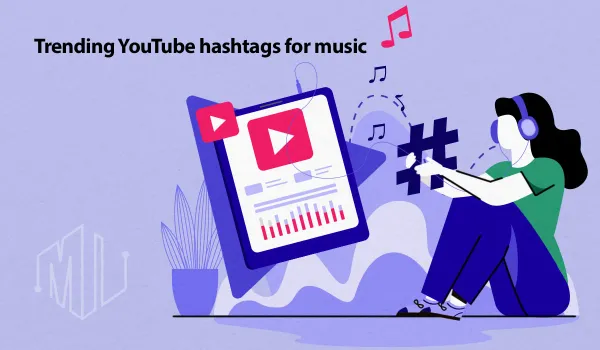How to Do LinkedIn Data Scraping?
Discover how to scrape LinkedIn data ethically with our guide. Learn tools, tips, and best practices to boost your strategy.

LinkedIn, with its vast ocean of professional data, is a treasure trove for businesses, marketers, and recruiters. LinkedIn data scraping has emerged as a powerful technique to harness this data for diverse applications, including lead generation, market research, talent acquisition, and competitor analysis.
However, the process can be complex and fraught with challenges, especially given LinkedIn's stringent data privacy policies and complex data structures. This guide aims to demystify LinkedIn data scraping, offering you an in-depth understanding of how to scrape LinkedIn effectively and ethically.
✨ Unleash the Power of AI with MagicalAPI!
Whether you’re optimizing YouTube content, extracting LinkedIn data, or evaluating resumes, MagicalAPI is your one-stop solution! Discover the diverse range of AI services tailored to meet your every need. Dive in and elevate your digital experience today!

What is LinkedIn Data Scraping?
LinkedIn data scraping refers to an automated process of extracting valuable information from the social media platform, LinkedIn, the world’s largest professional networking platform.
These tools, known as LinkedIn scrapers, can pull out a range of data from a user's LinkedIn profile, job listings, company information, and more. This data can then be utilized for various applications like market research, lead generation, recruitment, and competitor analysis.
There are two main approaches to LinkedIn scraping: manual and automated.
Manual LinkedIn scraping:
The manual approach involves coding, particularly using Python, and leveraging libraries such as BeautifulSoup and requests to parse HTML content and extract data. This method is cost-effective as it relies on free libraries and tools but requires a basic understanding of coding.
Automated LinkedIn scraping:
Automated scraping tools simplify the process by navigating LinkedIn profiles and extracting data based on set instructions. These tools can vary in terms of features, capabilities, and price, making it essential to choose one that fits your specific needs.
Some tools are designed for more comprehensive data extraction, including profile details, skills, group memberships, and educational background, while others focus on specific data points like names, job titles, and company information. Some scrapers also offer automation features, such as scheduling scrapes, customizing data fields to be extracted, and integrating scraped data with other applications or CRM tools.
Using an automated LinkedIn scraper requires selecting a tool that fits your specific needs in terms of features, ease of use, and pricing.
Types of LinkedIn Scraping Tools
LinkedIn scraping tools come in various forms, each with its specific functionalities and uses. Here are a few types:
Proxy-Based LinkedIn Scrapers
Proxy-based scrapers are designed for robust and large-scale data extraction efforts. These tools, utilize a network of proxy servers to mask the scraping activities. This approach helps to:
- Distribute Requests: Routing requests through various IP addresses, it mitigates the risk of getting blocked by LinkedIn's anti-scraping mechanisms.
- Scale Operations: Suitable for businesses that require extensive data, such as market research firms or large recruiters.
- Ensure Anonymity: Enhances privacy and security by hiding the user's real IP address.
These tools are more complex and may require a deeper technical understanding to set up and manage effectively.
Cookie-Based LinkedIn Scrapers
Cookie-based scrapers operate by using the cookies from your web browser. This means they mimic the activity of a logged-in user, allowing them to access data that might be restricted to LinkedIn profiles or searches. Key features include:
- User Authentication Mimicry: By using your LinkedIn session cookies, these tools can scrape data as if they were you, accessing more personalized and restricted information.
- Flexibility: They allow for targeted scraping tasks, such as extracting data from specific LinkedIn profiles or search results.
- Ease of Use: Generally user-friendly, requiring less technical setup compared to proxy-based tools. However, they rely on your LinkedIn account, which could risk account security or compliance with LinkedIn's terms of service.
Browser-Extension LinkedIn Scrapers
Browser-extension tools, are installed directly into your web browser and can be activated while navigating LinkedIn. They offer:
- Convenience: With the click of a button, you can start scraping the data of the LinkedIn profile you are viewing.
- Immediate Results: They're ideal for individuals or small businesses that need quick access to LinkedIn data without setting up a dedicated scraping infrastructure.
- Limited Scale: While convenient for ad-hoc and small-scale scraping tasks, they may not be suitable for large volume data extraction due to the potential performance impact on your browser and the risk of LinkedIn detecting unusual activity.
Is it legal to scrape LinkedIn data?
Understanding the legal aspects of LinkedIn data scraping is paramount to using the platform responsibly and ethically. With great power comes great responsibility and it's crucial to understand that not all data is free for the taking.
LinkedIn is a rich source of data. However, it has stringent rules against unauthorized data scraping. The legal aspects of LinkedIn Data Scraping are outlined in their User Agreement, which explicitly prohibits software or tools that automatically download or scrape data from their site without their consent.
With proper authorization and ethical practices, data scraping can still be utilized effectively and legally. It's all about learning how to navigate these legal waters with respect and understanding. Many businesses use authorized APIs that adhere to the legal aspects of LinkedIn data scraping to ensure they're not violating any laws or terms of service.
Which LinkedIn Data Can You Scrape?
Technically, with the right tools, you can scrape various types of data from LinkedIn. This can include:
- LinkedIn profile data: Personal and professional information about users, including their names, job titles, skills, education, experience, and more.
- Company data: Information about companies, including their names, industries, sizes, descriptions, employee details, and more.
- Job listings: Details about job postings, including job titles, descriptions, requirements, locations, and more.
- Group data: Information about LinkedIn groups, including group names, descriptions, member counts, and more.
Choosing the Right Tool
The choice of tool depends on several factors, including the scale of data extraction needed, technical expertise, and compliance with LinkedIn's policies. Proxy-based tools are best for large-scale, automated scraping operations requiring data from a vast number of profiles.
Cookie-based scrapers offer a balance between ease of use and access to personalized data, suitable for medium-scale, more targeted tasks. Browser-extension tools are most convenient for individual professionals or small businesses needing immediate, small-scale data extraction directly from their web browsers.

Essential Dos and Don'ts for LinkedIn Data Scraping
When it comes to scraping data from LinkedIn, there are some important do's and don'ts to keep in mind to ensure that your activities are responsible, ethical, and in line with legal and platform guidelines. Here's a breakdown:
Do's:
- Understand LinkedIn's Terms of Use: Before you start scraping, make sure you're familiar with LinkedIn's terms of service. They have specific clauses about automated data extraction.
- Use Publicly Available Information: Focus on publicly available data that doesn't require logging in or bypassing any form of authentication.
- Be Respectful of Data Privacy: Even when data is public, consider the privacy of individuals. Don't use scraped data for purposes that individuals have not consented to.
- Limit Your Request Rate: To avoid overloading LinkedIn's servers, make sure to limit the frequency of your scraping requests to a reasonable rate.
Don'ts:
- Don't Ignore LinkedIn's Robots.txt: This file on LinkedIn's server provides guidelines on what parts of the site can be crawled by bots. Ignoring it can lead to legal issues.
- Don't Scrape Protected Data: Avoid any attempt to scrape data that's not publicly accessible without appropriate permission. This includes data behind login protections or other access controls.
- Don't Use Scraped Data for Spam or Malicious Activities: Using data collected from LinkedIn to spam or engage in unauthorized marketing activities can lead to legal consequences and platform bans.
- Don't Overload LinkedIn's Servers: Sending too many requests in a short period can be considered a denial of service attack, which is illegal.
Understanding and adhering to these guidelines is crucial for conducting LinkedIn scraping activities ethically and legally. Always prioritize transparency, respect for privacy, and adherence to legal standards in your data collection practices. Given the evolving nature of legal interpretations around web scraping, staying informed about current laws and court rulings in your jurisdiction is also important.
The Future of LinkedIn Scraping
As technologies like AI and machine learning continue to evolve, they're expected to enhance LinkedIn scraping techniques, helping businesses extract even more valuable insights from LinkedIn data. However, as these technologies advance, businesses must also remain vigilant about privacy and ethical considerations.
The Best Way to Scrape LinkedIn Profiles
Several tools offer efficient and reliable LinkedIn profile scraping services. Your choice will depend on your specific needs, the volume of data you intend to scrape, and your technical skills.
MagicalAPI offers a service for legally scraping LinkedIn profiles and company data. The process involves providing a LinkedIn profile link, after which MagicalAPI collects publicly available data, including work history, education, skills, and more, presenting it in an organized format. This service enables users to gain business insights and make informed decisions by leveraging the extracted LinkedIn data. For more detailed information, visit our Profile Data and Company Data service pages.
conclusion
In conclusion, navigating LinkedIn data scraping successfully means carefully balancing your information gathering goals with respect for privacy and compliance with legal standards. Always prioritize ethical practices, adhere to LinkedIn's guidelines, and utilize appropriate tools for public data. This mindful approach ensures you harness the vast potential of LinkedIn's data while maintaining integrity and respect for individual privacy.
FAQ
What is LinkedIn data scraping?
LinkedIn data scraping is the process of extracting information from LinkedIn profiles, job listings, company pages, and other sections of the site using automated tools or scripts. This data can be used for various purposes like lead generation, recruitment, market research, and competitive analysis.
How do I scrape data from LinkedIn?
To scrape data from LinkedIn, you can use web scraping tools or write your own scripts using programming languages like Python. Popular tools like Magical API can help you extract specific data points such as names, job titles, company names, and contact information from LinkedIn profiles and pages.
Is LinkedIn scraping legal?
LinkedIn scraping falls into a gray area legally. While public data scraping is generally allowed, LinkedIn’s terms of service prohibit unauthorized scraping. It’s crucial to respect user privacy and LinkedIn’s policies to avoid potential legal issues.
َّ

Join to our community
By joining our Discord server, get assistance, and troubleshoot any challenges you may encounter while using our services.
Join us on Discord
َ




